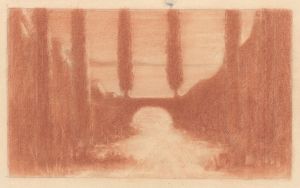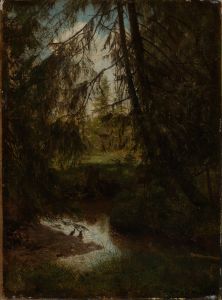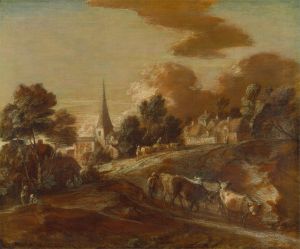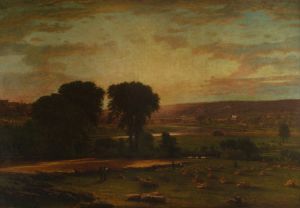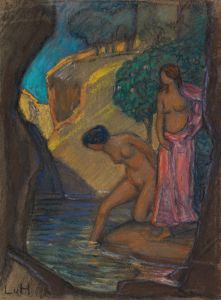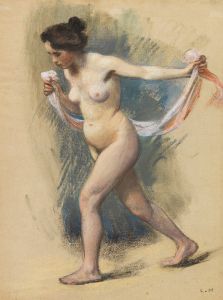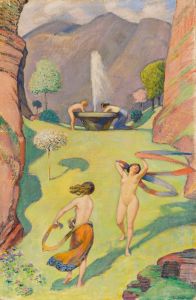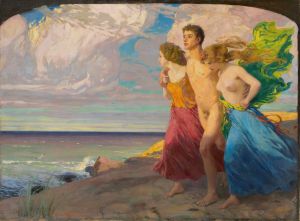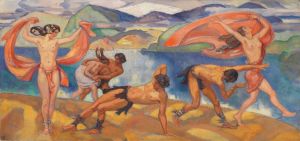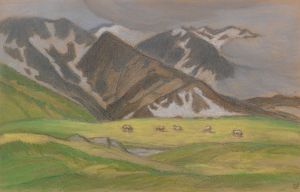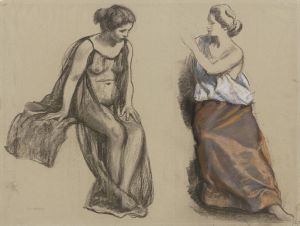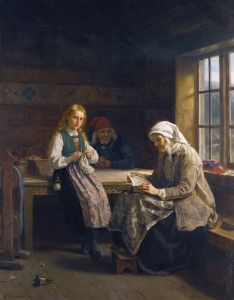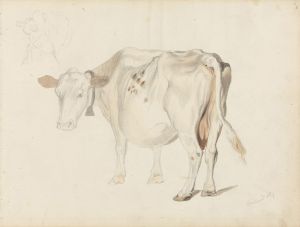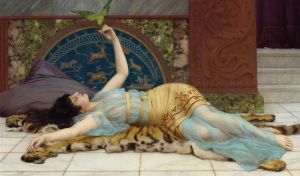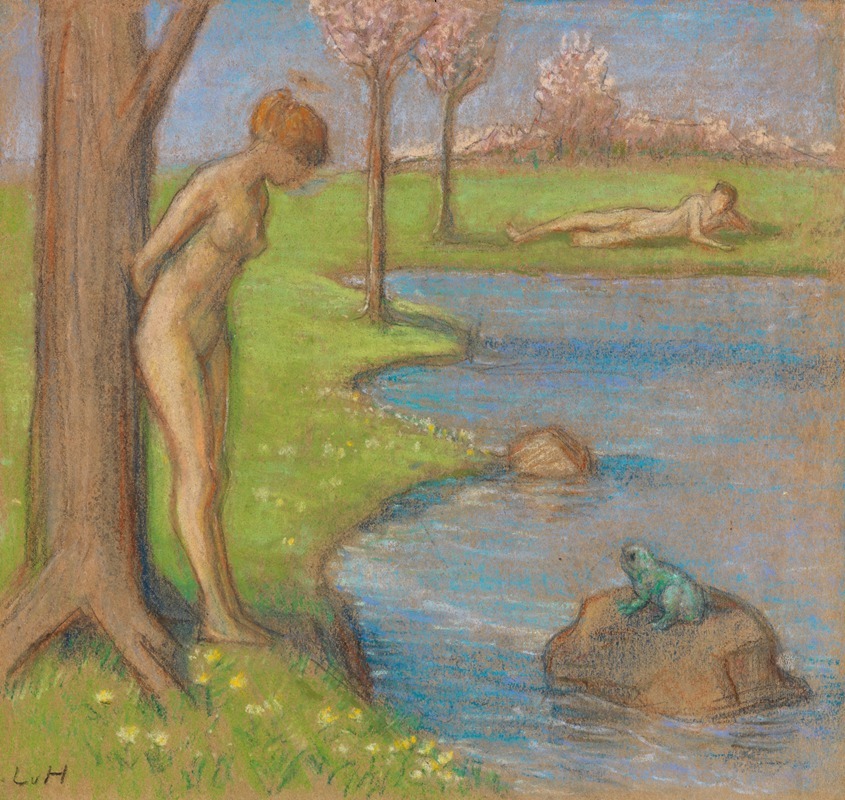
Frühlingslandschaft mit Paar am Froschteich
A hand-painted replica of Ludwig von Hofmann’s masterpiece Frühlingslandschaft mit Paar am Froschteich, meticulously crafted by professional artists to capture the true essence of the original. Each piece is created with museum-quality canvas and rare mineral pigments, carefully painted by experienced artists with delicate brushstrokes and rich, layered colors to perfectly recreate the texture of the original artwork. Unlike machine-printed reproductions, this hand-painted version brings the painting to life, infused with the artist’s emotions and skill in every stroke. Whether for personal collection or home decoration, it instantly elevates the artistic atmosphere of any space.
Ludwig von Hofmann was a prominent German painter and graphic artist associated with the Jugendstil and Symbolist movements. Born in 1861 in Darmstadt, Germany, Hofmann became known for his idyllic and often dreamlike landscapes that frequently incorporated figures in harmonious interaction with nature. His work reflects a fascination with the themes of beauty, youth, and the natural world, often imbued with a sense of tranquility and introspection.
One of Hofmann's notable works is "Frühlingslandschaft mit Paar am Froschteich" (Spring Landscape with Couple at the Frog Pond). This painting exemplifies Hofmann's characteristic style, where he merges elements of nature with human figures to create a serene and harmonious composition. The painting depicts a couple situated by a pond, surrounded by the lush vibrancy of spring. The scene is imbued with a sense of renewal and the gentle awakening of nature, a common motif in Hofmann's oeuvre.
Hofmann's use of color and form in this painting is particularly noteworthy. He employs a palette that captures the freshness and vitality of spring, with soft greens, blues, and other pastel hues that evoke a sense of calm and rejuvenation. The figures in the painting are integrated into the landscape, suggesting a unity between humanity and nature that is central to Hofmann's artistic vision. This integration is a hallmark of the Jugendstil movement, which sought to break down the barriers between fine art and the natural world.
The composition of "Frühlingslandschaft mit Paar am Froschteich" reflects Hofmann's interest in classical ideals and his admiration for the art of antiquity. The figures are often depicted in poses reminiscent of classical sculpture, emphasizing grace and balance. This classical influence is combined with a modern sensibility, as Hofmann was also influenced by contemporary movements and the changing artistic landscape of his time.
Hofmann's work, including this painting, was well-received during his lifetime, and he held several prominent teaching positions, including a professorship at the Weimar Saxon-Grand Ducal Art School. His influence extended to a new generation of artists, and his work was exhibited widely across Europe.
"Frühlingslandschaft mit Paar am Froschteich" is a testament to Hofmann's ability to capture the ephemeral beauty of nature and the human experience within it. The painting remains an important example of early 20th-century German art, reflecting the broader cultural and artistic shifts of the period. Through his work, Hofmann invites viewers to contemplate the relationship between humanity and the natural world, a theme that continues to resonate in contemporary discussions about art and the environment.





